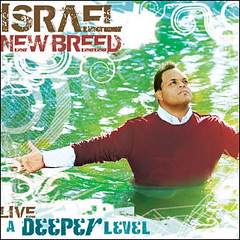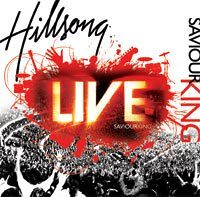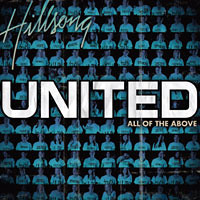What can a peanut butter and jelly sandwich teach us about the Trinity and about authentic worship? Maybe just that the Christian life is a life of balance and self-control perfectly blended into an active and growing faith in God as Father, Son, and Holy Spirit!
My daughter, Aly, won’t eat peanut butter and jelly sandwiches much in the summertime. I’ve noticed for the last couple of years that she almost always turns them down during the months of June, July, and August, which was a minor mystery to me until I realized one day that she’d probably eaten about 270 of them from September to May!
I’ve never heard her complain about having PB&J sandwiches in her lunches for school, but she seems to quietly boycott them through the summer months. Maybe she’s doing it just to balance out her intake quota for the year. Maybe she just knows intuitively that there’s only so much PB&J a kid can take before the jelly turns every internal organ to pure grape-flavored glucose and the peanut butter permanently sticks her tongue to the roof of her mouth. Smart girl, that Aly. She’s already practicing the disciplines of balance and self-control in her life, even if it’s only by monitoring the number of peanut butter and jelly sandwiches that a kid should eat in any given year. I should probably take a few lessons from her and learn to practice more balance and self-control in my life, too, and I ain’t talking about sandwiches!
Authentic worship in all of its forms is at its best when practiced with balance and self-control, as well. A common caution heard throughout our churches is that we must never “worship the worship” no matter how good it gets and this amounts to a call for balance and self-control, individually and corporately.
We’ve probably all heard of churches going so far as to split over worship styles and worship expressions when someone or some element in their worship has gotten out of balance and “gone off the deep end” so to speak. It’s easy to do, really, to get out of balance on some things, especially if there’s no clear doctrinal statement about worship and its practices in your church. In my Worship4Life Weekends, I always spend time encouraging the local pastors and worship leaders to identify the particular beliefs and expressions from the Bible that they adhere to in their church and to actually write out a unifying theology of worship for everyone to read and to understand as the guiding document for worship practices.
Without stating out loud or writing down what you believe as a church about worship you create a vacuum that others will be happy to fill for you. When this happens, worship wars begin and the balance and propriety of worship that Paul talked about in 1 Corinthians 14 can be lost. Come to think of it, a PB&J isn’t a bad analogy for the balance we seek in worship, or even for understanding that the goal of worship in its fullness is to the Father, through the Son, and by the Holy Spirit.
The Bread
The baking of bread is an ancient art. The ruins of Pompeii reveal the highly developed bakeries that existed thousands of years ago. One of the oldest professional guilds still in existence in London today is called The Worshipful Company of Bakers which has existed for over 800 years now. The original company of bakers who formed this guild worshiped together and formed their guild from the close relationship they shared in the church.1 Bread-baking goes back even further in time, of course, as one of the first arts to develop beyond man as cave-dwelling hunter-gatherers. Some sources even credit the growing of grain as the beginning of civilization itself.2 But regardless of where it all started, bread is a daily part of our lives and quite useful in many ways.
Bread is mentioned in the Bible over 300 times 3 and was used by Jesus on several occasions as a metaphor or teaching example. He taught His disciples to pray, “Give us this day our daily bread” (Matthew 6:11) and He called Himself “the Bread of life” (John 6:35). The resurrected Jesus appeared to the disciples on a lonely stretch of beach in the early morning, granting them a great haul of fish (they had caught none so far that morning) and cooking for them a breakfast of fish and bread (John 21). Bread itself is a unique concoction of flour, water, sugar, salt, and yeast and people have argued for centuries over whether white or wheat is better.4 For our analogy of a PB&J, though, I see the bread as being kind of like the Father – He’s holding everything together! The peanut butter and jelly wouldn’t make much sense without the bread, just like Christ lives in us by His Spirit to the end that we worship the Father. The entire chapter of John 17 is a beautiful picture of the communion between the Father, Son, and Spirit where Jesus prayed for us “that they may be one as we are one” (v. 22).
The Peanut Butter& Jelly
Skipping for now the historic and scientific background of peanut butter and jelly (I like grape, in particular), most of us recognize that they go perfectly together on a PB&J. Whether you like crunchy or smooth, grape or strawberry, this sandwich is a favorite for kids and grownups alike. This sandwich was popular in WWII rations for soldiers, actually, and the GI’s wanted to continue eating them after the war ended. Some food makers even put the peanut butter and jelly together in the same jar, but I’ve never liked that idea – I prefer to spread them on the bread myself, the jelly on one slice and the peanut butter on the other – what a moment when they come together! If you can make a huge theological and metaphorical leap with me here, I kind of see this as a way to think about how God possesses an amazing oneness in Himself as the Trinity of Father, Son, and Spirit – when you envision them as the simple elements of a PB&J, they work perfectly together! Of course, it isn’t that simple, but hey – Jesus used some pretty simple things like seeds and birds to convey deep spiritual truths to His followers, too.
A.W. Tozer wrote in The Knowledge of the Holy, “The Persons of the Godhead, being one, have one will. They work always together, and never one smallest act is done by one without the instant acquiescence of the other two. Every act of God is accomplished by the Trinity in Unity.”4 It is difficult for us to imagine how efficient this unity is in God as One in Three, Three in One. Tozer goes on to stress the importance of faith when it comes to embracing the Trinity as a biblical concept and doctrine. He warns of the danger of assigning specific roles to the Father, Son, and Spirit, though each, in fact, manifest or reveal themselves in specific ways at specific times. The important thing to remember is that they work in complete communion and community with each other, fulfilling perfectly God’s unified plan and will for mankind, kind of like a PB&J – it’s just terribly difficult to separate them once you’ve got them stuck together!
In Conclusion
So, what does a PB&J teach us about authentic worship and the Trinity? Probably nothing, really, but maybe the silliness of the analogy will make some of us think a little deeper about them. Important thinkers and writers like Brian McClaren have been calling for more songs and artistic expressions of the Trinity in the last couple of years and it seems as if God is beginning to emphasize His threeness in oneness these days in articles, books, and songs. If we ignore the doctrine of the Trinity in our songs, as worship leaders, I believe that we’re doing our congregations a disservice.
Some of the old hymn writers knew the value of the doctrine and wrote songs like Come, Thou Almighty King and Holy, Holy, Holy, but there is still not a large number of hymns about the Trinity. The ones we have we should use and those who can write must write more important hymns and choruses that help us to embrace the unique ministries of Father, Son, and Spirit. Perhaps, then, we will achieve a balance in our intake quota of great doctrine in song just like Aly and her PB&J’s. Smart girl, that Aly!
 | ||||
| ||||
Source
[tags : sembah worship hillsong lyrics chords]








No comments:
Post a Comment